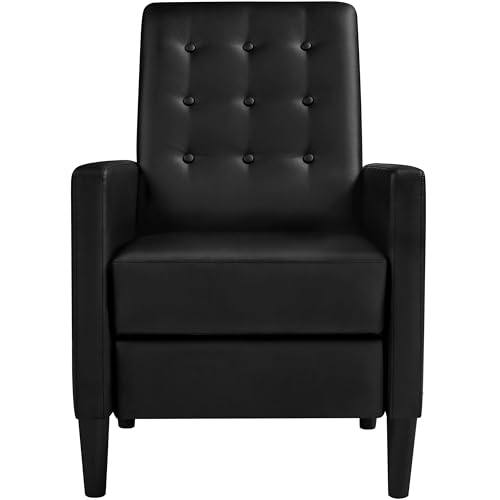7 Little Changes That Will Make A Big Difference With Your Modern Recliners
The Evolution of Modern Recliners: Comfort and Design in the 21st Century
Modern recliners have actually transcended their standard role as basic, adjustable seating options. As soon as limited to the realms of function, these chairs have actually evolved into sophisticated pieces of furnishings that combine ergonomic style, design, and cutting-edge innovation. Today's recliners are not just furnishings; they are an integral part of the home environment, improving relaxation, entertainment, and total wellness. Reclining Chairs UK will explore the development of modern recliners, explore different types and functions, and answer some regularly asked questions.
A Brief History of Recliners
The story of recliners began in the late 19th century when they initially became a development in furnishings style. Originally called Small Recliner Chairs ,” these chairs were developed for comfort and relaxation. Throughout the years, their material composition, ergonomic designs, and performances have actually considerably changed, resulting in the modern recliner we see today.
Development Through Time
The development in innovation over the years has played an essential function in the advancement of modern recliners. Early recliners included standard reclining mechanisms, primarily counting on mechanical levers. On the other hand, today's models integrate different technological innovations, including electric motors and adjustable functions that enable users to tailor their seating experience.
Secret Milestones
Year
Turning point
1928
Introduction of the first reclining chair
1950s
Mass production and marketing of recliners
1980s
Incorporation of swivel and glider systems
2000s
Rise of ergonomic designs and memory foam
2010s
Integration of wise innovation and USB ports
The Anatomy of a Modern Recliner
Modern recliners come packed with a range of functions designed to boost user comfort. Understanding these functions can help consumers make educated choices when choosing a recliner.
Key Features to Consider
Reclining Mechanism
- Manual recline: Operated with a lever or a lock.
- Power recline: Uses a motor for uncomplicated reclining, typically with several positions.
Material Options
- Leather: Offers a classic, elegant feel.
- Fabric: Available in various colors and textures, suitable for family use.
- Synthetic leather: A more budget-friendly and animal-friendly option to genuine leather.
Ergonomics
- Lumbar support: Critical for back health, adjustable alternatives offered.
- Head and neck support: High-back designs and integrated headrests.
- Ottoman compatibility: Many modern recliners feature integrated footrests or matching ottomans.
Technological Additions
- USB charging ports: Convenient connectivity for gadgets.
- Massage features: Varying intensity levels for relaxation.
- Heating functions: Helps soothe aching muscles.
Style Styles
- Contemporary: Sleek, minimalist styles appropriate for modern homes.
- Traditional: Classic styling and deep cushions for a relaxing feel.
- Environmentally friendly options: Made from sustainable products.
Types of Modern Recliners
In the diverse world of modern recliners, different designs accommodate different requirements and tastes. Here's a rundown of the most popular recliner types today:
Popular Recliner Types
Wall-Hugger Recliners
- Require minimal space, ideal for smaller homes.
Lift Recliners
- Equipped with a lifting mechanism that gently helps users in standing.
Rocker Recliners
- Combine the reclining and rocking functions, ideal for relaxation.
** reclining Sectionals **
- A sectional sofa that enables several people to recline simultaneously.
Home Theater Recliners
- Designed for cinema-like experiences, frequently featuring cup holders and reclining seats.
The Best Places to Use Modern Recliners
Modern recliners can improve numerous living areas in a home. Here are some perfect locations:
- Living Room: The main event spot for relaxation and entertainment.
- Home Theater: Upgrades the movie-watching experience with comfort and design.
- Bed room: Serves as a comfortable area for reading or unwinding before sleep.
- Office: Offers a peaceful break area during long work hours.
Frequently Asked Questions (FAQs)
What is the average lifespan of a recliner?
The lifespan of a recliner can vary considerably based upon its construction and use. Nevertheless, a high-quality recliner can last anywhere from 7 to 15 years with appropriate care.
How frequently should I clean my recliner?
It's advisable to clean your recliner at least once a month. Utilize a microfiber fabric for fabric recliners and a soft leather cleaner for leather chairs to preserve their look and health.
Are power recliners more expensive than manual recliners?
Normally, yes. Power recliners use sophisticated innovation that typically comes at a greater rate point compared to manual recliners.
Can recliners be repaired if they break?
Yes, numerous recliners can be fixed. Issues such as damaged mechanisms or damaged upholstery can normally be solved through expert repair work, depending upon the intensity.
What should I try to find when buying a recliner?
Think about factors such as the reclining system, material, ergonomic features, size, design, and any additional innovation that fits your way of life and home decor.
The modern recliner has come a long method from its modest origins. Today's recliners are not merely functional pieces of furniture but are designed to improve the total lifestyle for their users. As innovation continues to advance and consumer choices evolve, we can anticipate to see even more development worldwide of recliners. Whether seeking a trendy centerpiece for a living-room or a relaxing spot for relaxation, today's recliners offer something for everyone. With a wide range of choices readily available, choosing a recliner has actually never been much easier or more exciting.
